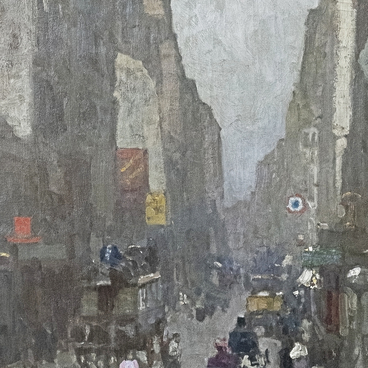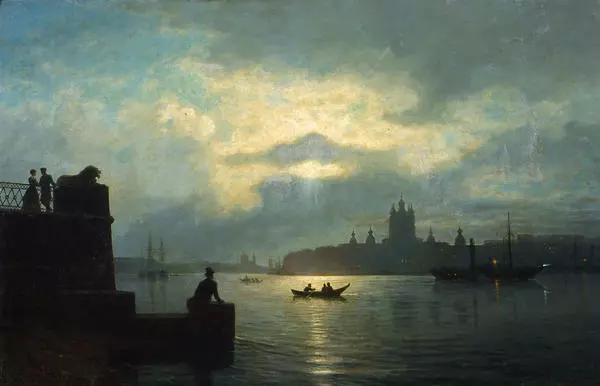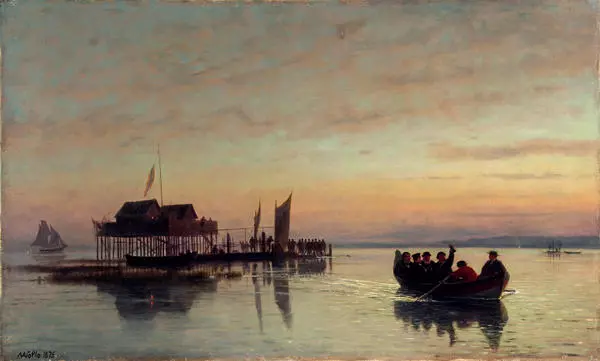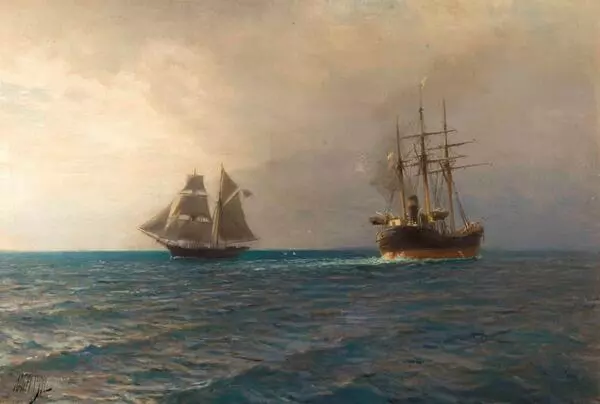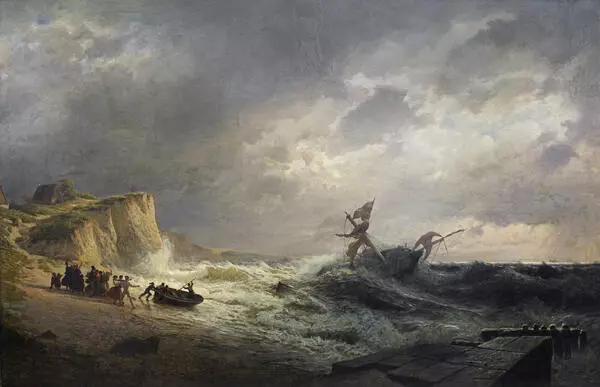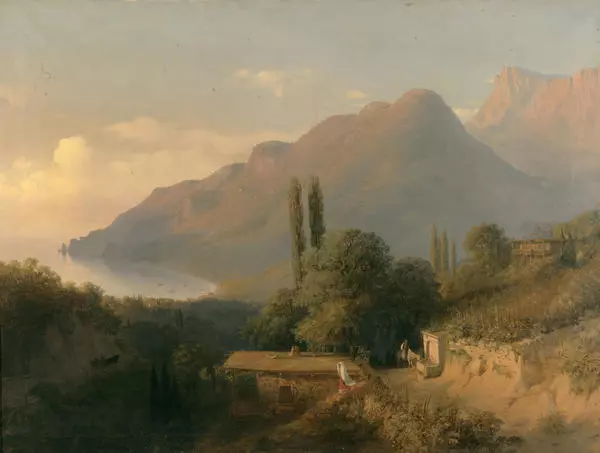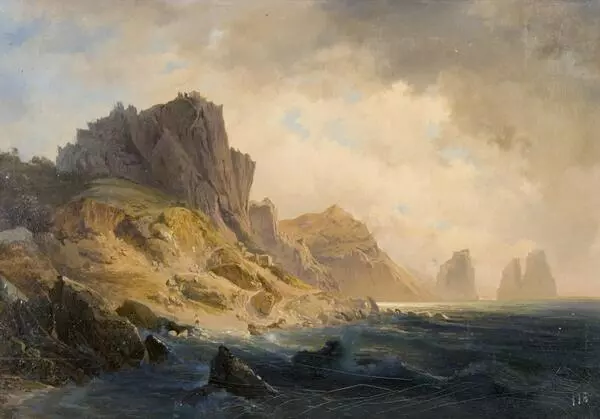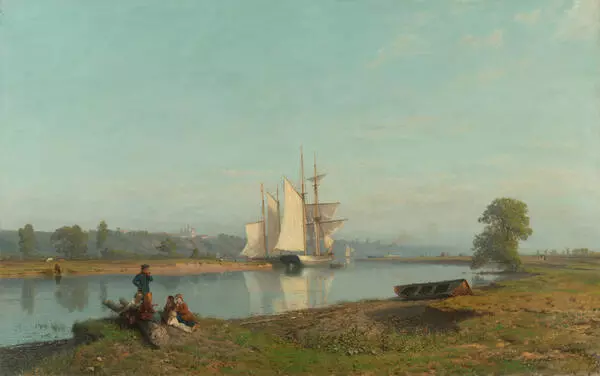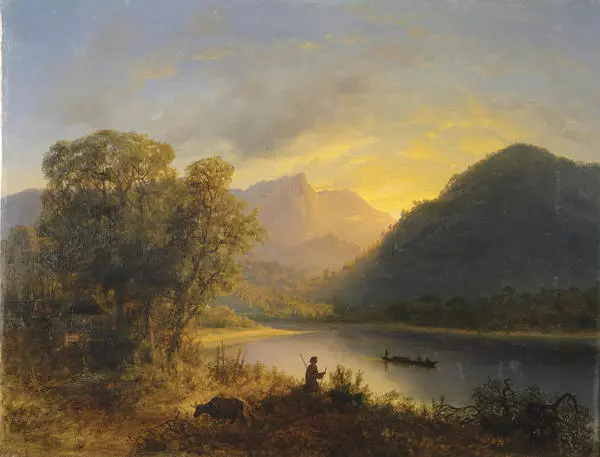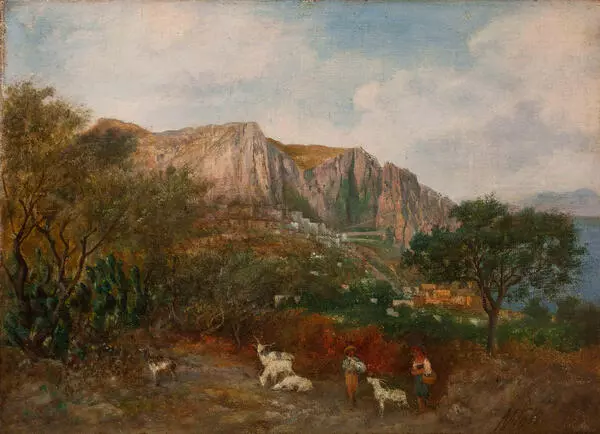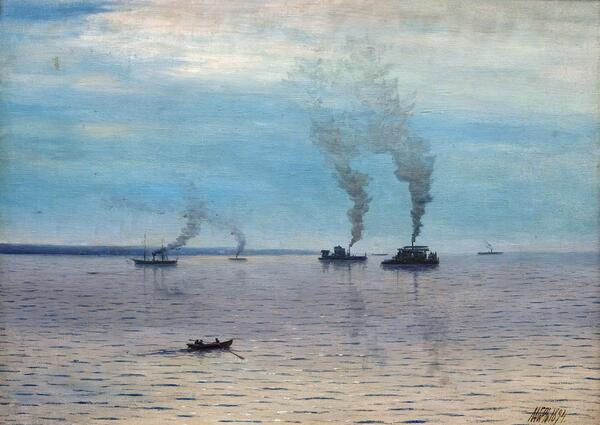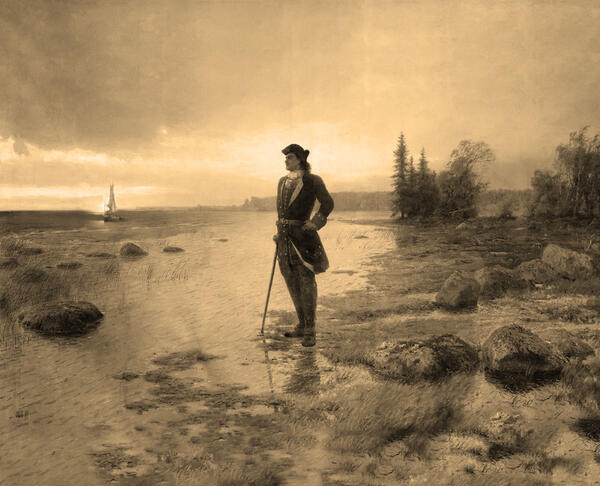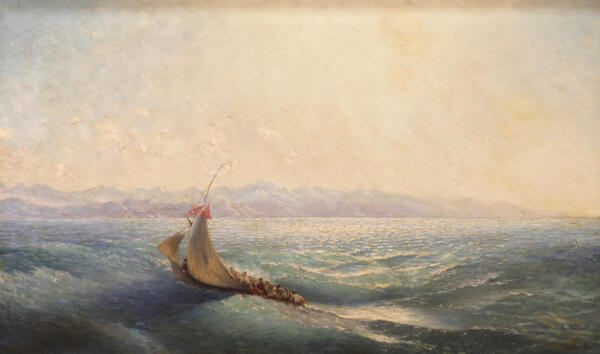Lev Lagorio is a Russian artist of Italian descent. He was born in Feodosia in the family of a Neapolitan vice-consul, and later took Russian citizenship.
Just like Ivan Aivazovsky, another painter born in Feodosia, Lagorio was in love with the sea from a young age and was fond of drawing. He even managed to take several lessons from Aivazovsky himself before entering the Academy of Arts. As a student, Lagorio went on a journey on a military frigate, and even sailed alone in his own boat in the Gulf of Finland.
After successfully completing his landscape class, Lagorio received an opportunity to travel abroad. At first, the young artist visited Paris, but he spent most of his time in Italy. This trip turned out to be very successful — the artist obtained the professor title for the three paintings that he had created in Italy.
Lagorio painted ‘View of Vesuvius from Ischia’ in the 1860s, inspired by the Italian trip. At this time, Lagorio painted bright sunny landscapes, experimented with the contrast of light and shadow. The artist meticulously depicted Italian views — the masonry walls, the tree leaves and even the holes in the stones are rendered with utmost care. In the center of the composition, there is a girl getting water from the well. A male figure with a musical instrument is depicted farther on the veranda.
Sunny Italian views were among the most common motives used by Russian landscape painters in the first half of the 19th century. However, Lagorio was attracted by the unusual corners of the Apennine Peninsula, as he tried to find his own, unique image of Italy. While painting the courtyards of the locals, the artist tried to depict their life in an unexpected way and to make the paintings entertaining.
The painting ‘View of Vesuvius from Ischia’ is clearly divided into two areas, each of which can be considered as a separate story. In the foreground, there is a fragment of the sunlit Italian courtyard. In the background, there is Vesuvius, one of the main natural attractions in southern Italy. It is shown in the distance, but put in a frame, which is formed by the hedge, the vine and the corner of the house. In this way, the artist attracts the viewer’s attention to the volcano.
Just like Ivan Aivazovsky, another painter born in Feodosia, Lagorio was in love with the sea from a young age and was fond of drawing. He even managed to take several lessons from Aivazovsky himself before entering the Academy of Arts. As a student, Lagorio went on a journey on a military frigate, and even sailed alone in his own boat in the Gulf of Finland.
After successfully completing his landscape class, Lagorio received an opportunity to travel abroad. At first, the young artist visited Paris, but he spent most of his time in Italy. This trip turned out to be very successful — the artist obtained the professor title for the three paintings that he had created in Italy.
Lagorio painted ‘View of Vesuvius from Ischia’ in the 1860s, inspired by the Italian trip. At this time, Lagorio painted bright sunny landscapes, experimented with the contrast of light and shadow. The artist meticulously depicted Italian views — the masonry walls, the tree leaves and even the holes in the stones are rendered with utmost care. In the center of the composition, there is a girl getting water from the well. A male figure with a musical instrument is depicted farther on the veranda.
Sunny Italian views were among the most common motives used by Russian landscape painters in the first half of the 19th century. However, Lagorio was attracted by the unusual corners of the Apennine Peninsula, as he tried to find his own, unique image of Italy. While painting the courtyards of the locals, the artist tried to depict their life in an unexpected way and to make the paintings entertaining.
The painting ‘View of Vesuvius from Ischia’ is clearly divided into two areas, each of which can be considered as a separate story. In the foreground, there is a fragment of the sunlit Italian courtyard. In the background, there is Vesuvius, one of the main natural attractions in southern Italy. It is shown in the distance, but put in a frame, which is formed by the hedge, the vine and the corner of the house. In this way, the artist attracts the viewer’s attention to the volcano.


